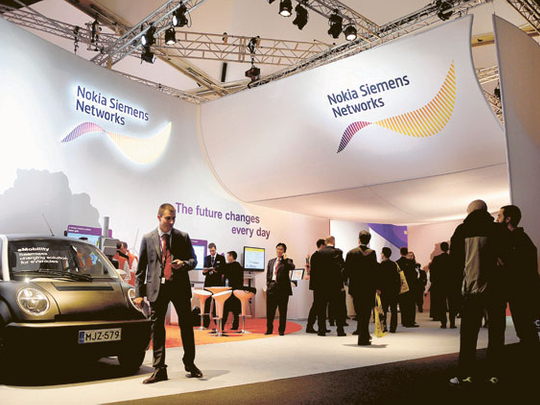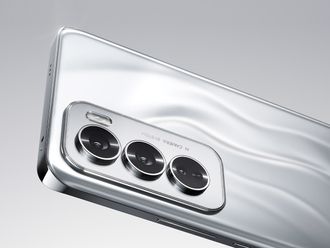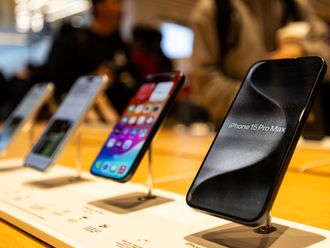
New York: Last November, Nokia Oyj researchers north of Helsinki chain-sawed a one-ton block of ice into 50-centimetre slabs and mounted them with infrared cameras to trace heat trails left by hands. Their goal: to study touch screens.
The "whimsical experiment," inspired by Finland's tradition of ice sculptures, was conducted by the Nokia Research Centre's Tampere branch, its website says. Together with projects such as building an electronic nose, stretchable electronic skin and sending anthropologists to Indian villages to observe rural mobile-phone use, it gave Nokia what analysts say is a bloated devices research and development budget.
At $4 billion (Dh14.6 billion) a year, it is more than twice Apple entire $1.78 billion R&D budget. At least a third of it goes to Symbian and MeeGo platforms that chief executive officer Stephen Elop said last week Nokia is retreating from in favour of Microsoft Windows Phone 7.
Elop plans "substantial" R&D spending cuts as he struggles to claw back ground lost to Apple's iPhone and Google's Android-based devices.
"There's a lot of fat in that research and development budget," said Adnaan Ahmad, a London-based analyst at Berenberg Bank. "They've plowed a hell of a lot of R&D money into competing with the iPhone and Google, but they've plowed it into a technology like Symbian that's from the 1990s."
With Nokia using Microsoft's operating system, software is one of the ripest fields for the Espoo, Finland-based company to cut costs and improve productivity. About four-fifths of Nokia's 18,000 to 19,000 R&D employees are in software, according to Credit Suisse estimates.
Painful transition
On February 11, within hours of Elop announcing the switch to Windows, hundreds of employees walked out in Tampere, where about half the 3,000 workers are Symbian developers.
"There's a long and painful transition period ahead," said Sami Sarkamies, a Helsinki-based analyst with Nordea Bank. "Development resources for Symbian and MeeGo will be clearly reduced and Nokia will be quickly building competencies related to Windows Phone 7 products." Based on Nokia's presentation, it may be planning to cut R&D costs by about a third, he said.
Operating system
Symbian-related research costs for Nokia reached about $1.4 billion last year, with more than a third of its 17,200 R&D workforce assigned to the operating system, according to Sanford C. Bernstein & Co. Apple spent $772 million on the iPhone in 2010, when it introduced the iPhone 4, according to the broker.
Apple's R&D was 2.7 per cent of sales for the year ended September, while Nokia's 2010 devices R&D was 10 per cent of the division's sales.
Nokia's R&D budget for handsets is a third higher than Samsung Electronics Co.'s, almost double BlackBerry-maker Research In Motion and more than twice Motorola Mobility Holdings Sanford Bernstein estimates.











